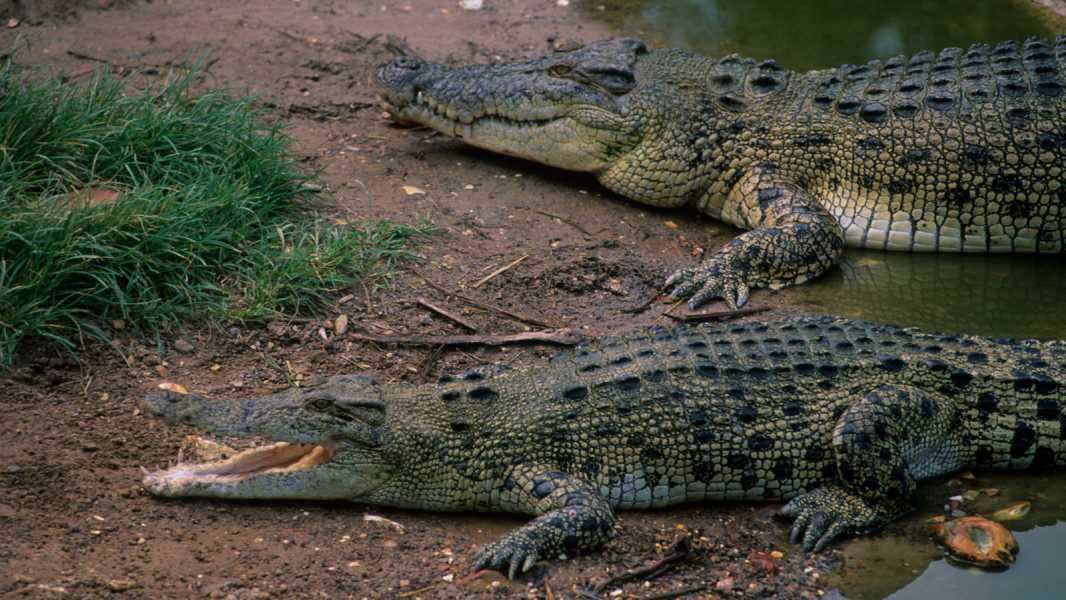
The world's crocodiles, like those found in Darwin, Australia, are under threat from climate change. (Photo credit: Wolfgang Kaehler/LightRocket via Getty Images)
New research has shown that climate change could push crocodiles to their limits.
In Australia, saltwater crocodiles (Crocodylus porosus) are facing challenges due to global warming. Like most reptiles, crocodiles are ectothermic (cold-blooded), meaning their temperature is controlled by their environment rather than by internal processes, unlike endothermic (warm-blooded) animals such as birds and mammals.
When crocodiles need to warm up, they sunbathe. And when they need to cool down, they can stay in the shade, dive into cool streams and pools, or bask on the shore at night.
But warming temperatures have caused these crocodiles to have higher body temperatures, which appears to have changed their behavior. In a paper published Feb. 12 in the journal Current Biology, the scientists report that over a 15-year period, the crocodiles’ average body temperature increased by a small but significant amount. They also spent more days at their critical thermal limit of 89.6 degrees Fahrenheit (32 degrees Celsius).
Previous studies of captive crocodiles have shown that body temperatures of 89.6 F or higher result in decreased swimming and diving efficiency. When their bodies become too hot, crocodiles spend more time trying to cool down and reduce their activity.
“The crocodile with a higher temperature has a higher metabolism,” lead author Caitlin Barham, a PhD student studying crocodile movement and behavior at the University of Queensland in Australia, told Live Science. “A higher metabolism means they burn oxygen more quickly. Lab experiments showed that they just couldn’t hold their breath for that long. It took them a little longer to recover at the surface.”
Between 2008 and 2023, researchers monitored 203 saltwater crocodiles (also known as saltwater crocodiles) at the Steve Irwin Sanctuary in Queensland. They tracked the reptiles’ body temperatures using acoustic devices implanted under their skin. These devices sent signals to nearby receivers, and additional trackers were used to record when the crocodiles went underwater.
If a crocodile was not detected for between 30 minutes and 24 hours and was then found again with an altered body temperature, the scientists assumed that the crocodile had changed its behavior to regulate its body temperature – either basking in the sun to raise it or seeking a cool place to lower it.
“The crocodile would disappear for a few hours and then return with temperatures 1 or 2 degrees [C, or 1.8 to 3.6 F] lower,” Barham said.
During the study, the scientists recorded about 6.5 million temperature readings from the crocodiles. The maximum body temperature increased by 0.99 F (0.55 C). Of all the crocodiles observed, 135 had body temperatures above 89.6 F at least once, and one individual had a temperature above 89.6 F for more than a month in 2021.
The highest body temperatures were associated with El Niño periods, when unusually warm Pacific currents led to hot and dry conditions on land. The frequency of these periods is thought to have increased as a result of climate change.
Cooling behavior was observed more frequently when the ambient temperature was higher. The crocodiles also dived for shorter periods of time when the temperature was higher, according to the tracking data.
Not
Sourse: www.livescience.com





